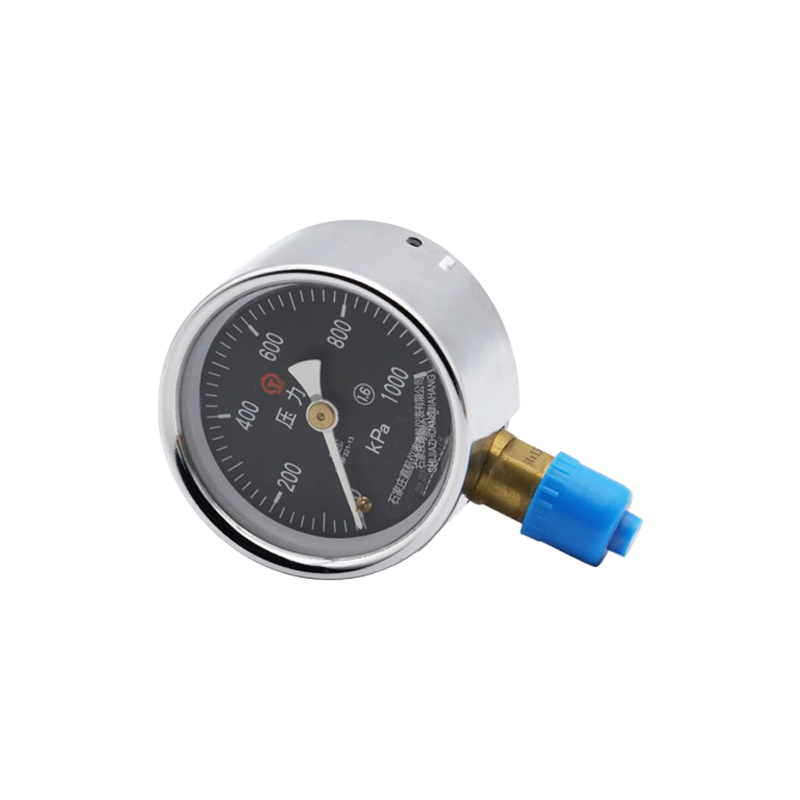
Nov . 12, 2024 09:46 Back to list
differential pressure gauge bellow type products
Understanding Differential Pressure Gauge Bellow Type Products
Differential pressure gauges are essential instruments in various industries for monitoring and measuring the difference in pressure between two points in a system. Among the different types of differential pressure gauges available, the bellow type is a prominent choice due to its unique design and functionality.
What is a Differential Pressure Gauge?
A differential pressure gauge is designed to measure the pressure difference between two locations within a system, such as across filters, pumps, or tanks. This measurement is crucial for ensuring that systems operate within safe and efficient parameters. Accurate monitoring of differential pressure can help detect blockages, leaks, and other issues before they develop into more significant problems, potentially saving time and money and enhancing system reliability.
The Bellow Type Design
The bellow type differential pressure gauge is characterized by its use of a bellow mechanism as the sensing element. The bellow is a flexible, accordion-like element that expands or contracts in response to pressure variations. This movement is then translated into a reading on the gauge.
The bellow type design has several advantages
1. Sensitivity Bellows can detect small pressure changes, making them suitable for applications requiring high precision.
2. Robustness The design is robust and can withstand harsh conditions, such as those found in industrial settings.
3. Wide Pressure Range Bellow type gauges can be constructed to measure a wide range of differential pressures, adapting to various application needs.
4. Low Maintenance These instruments typically require minimal maintenance, as there are fewer moving parts that could wear out over time.
Applications of Bellow Type Differential Pressure Gauges
Bellow type differential pressure gauges are versatile tools employed across multiple industries. Their common applications include
differential pressure gauge bellow type products

- HVAC Systems In heating, ventilation, and air conditioning systems, these gauges monitor pressure differentials to ensure efficient airflow and detect filter saturation.
- Water Treatment Plants They are used to measure pressure drops across filters, providing essential data for maintenance and operation.
- Pharmaceuticals and Biotech In the pharmaceutical industry, maintaining precise pressure differentials is crucial for various processes, including sterilization and fluid transfers.
- Oil and Gas They play a significant role in monitoring pressure differences in pipelines and tanks, essential for operational safety and efficiency.
Advantages of Using Bellow Type Gauges
The bellow type differential pressure gauge offers several advantages over other designs, including
- Accuracy The inherent movement of the bellows allows for highly accurate readings, critical in applications where precision is vital.
- Durability These gauges are less susceptible to the rigors of temperature and pressure fluctuations, making them reliable in demanding environments.
- Flexibility of Installation Bellow type gauges can be installed in various orientations, making them adaptable to different equipment layouts.
- Cost-Effective Given their durability and low maintenance requirements, bellow type differential pressure gauges can be a cost-effective choice over time.
Conclusion
In conclusion, bellow type differential pressure gauges are invaluable instruments widely used across various industries to monitor pressure differences effectively. Their unique design offers several benefits, including high sensitivity, robustness, and versatility, making them an excellent choice for applications where precision and reliability are paramount. As industries continue to evolve, the importance of accurate differential pressure measurement only grows, underscoring the role of these specialized gauges in ensuring operational efficiency and safety. Whether in HVAC systems, water treatment, pharmaceuticals, or oil and gas applications, bellow type differential pressure gauges are essential tools for maintaining the integrity of pressure systems.
-
High-Precision 5 Valve Manifold Differential Pressure Gauge Suppliers
NewsApr.29,2025
-
High-Precision Diaphragm Vacuum Pressure Gauges Manufacturers & Quotes
NewsApr.29,2025
-
Omega Differential Pressure Gauges High Accuracy & Durability
NewsApr.28,2025
-
Low Pressure Differential Pressure Gauges Precision Solutions & Quotes
NewsApr.28,2025
-
Digital Diaphragm Pressure Gaauge Precision Measurement & OEM Quotes
NewsApr.28,2025
-
Differential Pressure Gauge China Price High-Accuracy & Best Quotes
NewsApr.28,2025
